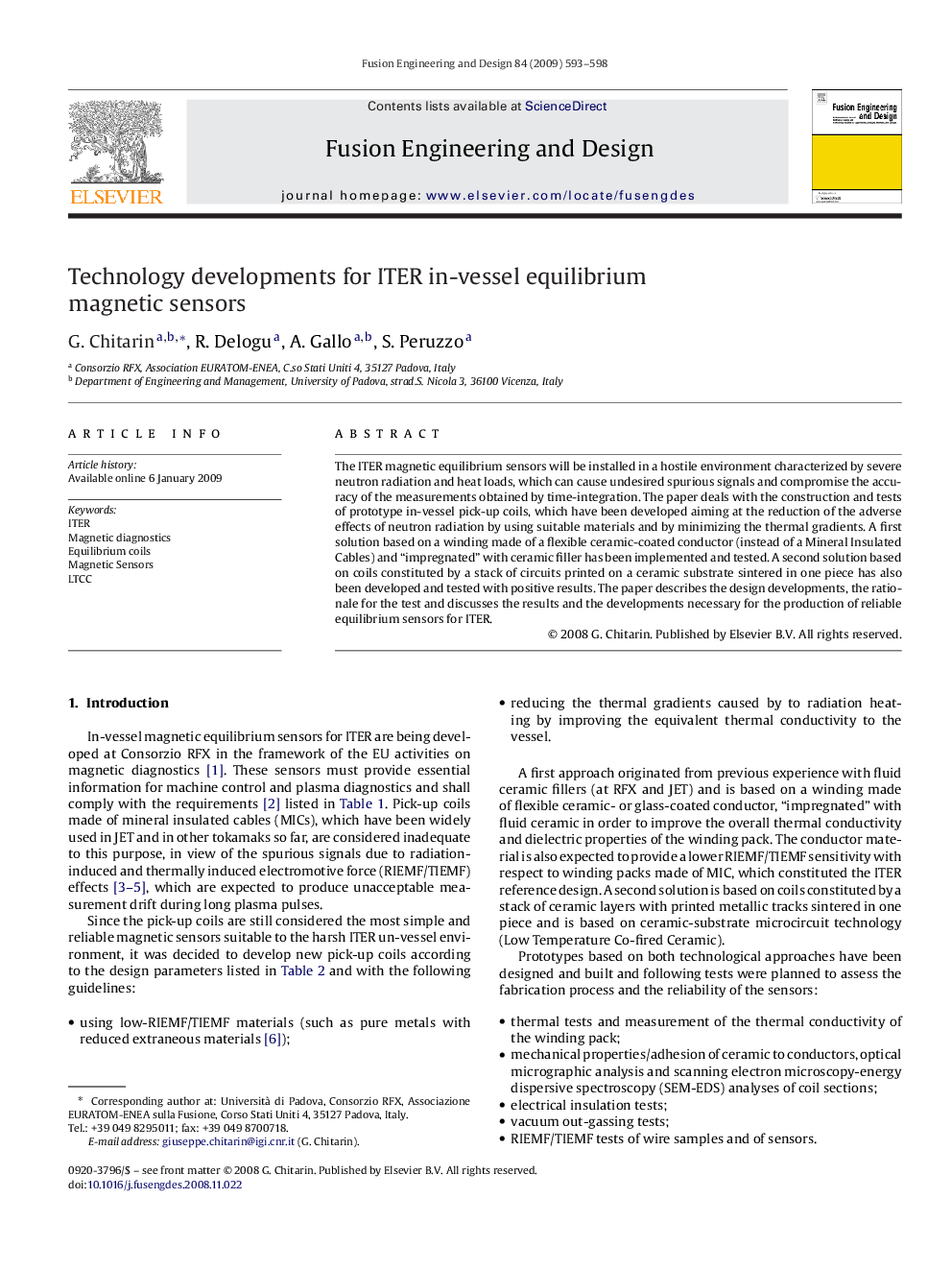| Article ID | Journal | Published Year | Pages | File Type |
|---|---|---|---|---|
| 273416 | Fusion Engineering and Design | 2009 | 6 Pages |
The ITER magnetic equilibrium sensors will be installed in a hostile environment characterized by severe neutron radiation and heat loads, which can cause undesired spurious signals and compromise the accuracy of the measurements obtained by time-integration. The paper deals with the construction and tests of prototype in-vessel pick-up coils, which have been developed aiming at the reduction of the adverse effects of neutron radiation by using suitable materials and by minimizing the thermal gradients. A first solution based on a winding made of a flexible ceramic-coated conductor (instead of a Mineral Insulated Cables) and “impregnated” with ceramic filler has been implemented and tested. A second solution based on coils constituted by a stack of circuits printed on a ceramic substrate sintered in one piece has also been developed and tested with positive results. The paper describes the design developments, the rationale for the test and discusses the results and the developments necessary for the production of reliable equilibrium sensors for ITER.
